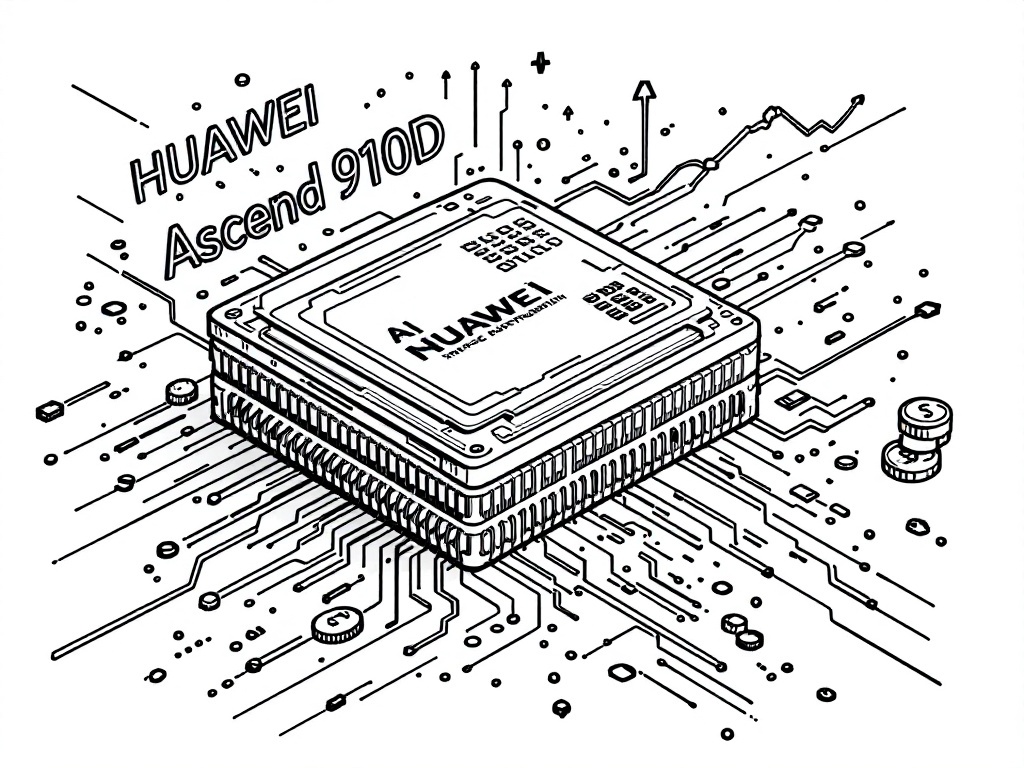Huawei's New AI Chip Aims to Rival Nvidia Amidst Tech Tensions

Shenzhen, Monday, 28 April 2025.
Huawei plans to test its powerful Ascend 910D AI processor, potentially outmatching Nvidia’s high-end chips despite U.S. trade restrictions. This could reshape global semiconductor dynamics.
The Ascend 910D: A New Challenger
Huawei Technologies Co., a leading Chinese tech firm, has unveiled plans to test its latest AI chip, the Ascend 910D, engineered to challenge Nvidia’s high-performance processors. According to reports from the Wall Street Journal, Huawei is approaching several Chinese tech companies to examine the chip’s capabilities, with sample tests expected by the end of May [1]. The Ascend 910D is part of Huawei’s broader strategy to assert its technological prowess amidst increasing global competition, particularly with the United States, which has imposed severe restrictions on Chinese access to high-end semiconductor components [2][3].
Technology and Trade Tensions
The development of Huawei’s Ascend 910D comes at a critical juncture in U.S.-China trade relations, particularly in the semiconductor sector. The U.S. government has previously restricted China’s access to Nvidia’s cutting-edge AI products, such as the H100 chip, citing national security concerns [4][5]. These restrictions are part of a broader strategy to curb China’s technological advancement, particularly in fields with military applications [6]. Huawei’s push to develop high-caliber AI processors like the Ascend 910D signifies China’s resilience and determination to close the technological gap with leading U.S. companies despite these geopolitical challenges [7].
Implications for the Global Market
The potential success of Huawei’s Ascend 910D may significantly alter the global semiconductor landscape. With the possibility of delivering performance surpassing that of the Nvidia H100, this chip could reduce China’s reliance on Western technology and enable domestic innovation. The mass production of earlier models, such as the Ascend 910B and 910C, reflects Huawei’s commitment to bolster its semiconductor capabilities [3][8]. Moreover, the company’s accelerated R&D investments, reaching $3 billion, underline its strategic focus on technology self-reliance amidst persistent trade tensions [9].
The Road Ahead
Looking ahead, Huawei’s advancements in AI chip technology may challenge established norms within the industry and prompt competitive responses from global players. Analysts will closely watch how tech firms worldwide adapt to Huawei’s emerging capabilities and which markets will adopt their new technologies. Furthermore, how this development influences U.S.-China negotiations on tech trade remains an essential factor for stakeholders to consider [10]. While the journey for Huawei’s Ascend 910D is just beginning, the implications for semiconductor trade dynamics are expansive and worth monitoring closely.
Sources
- www.cnbc.com
- www.rfi.fr
- cn.cointelegraph.com
- www.bloomberg.com
- news.mydrivers.com
- www.cnbeta.com.tw
- tech.tom.com
- www.reddit.com